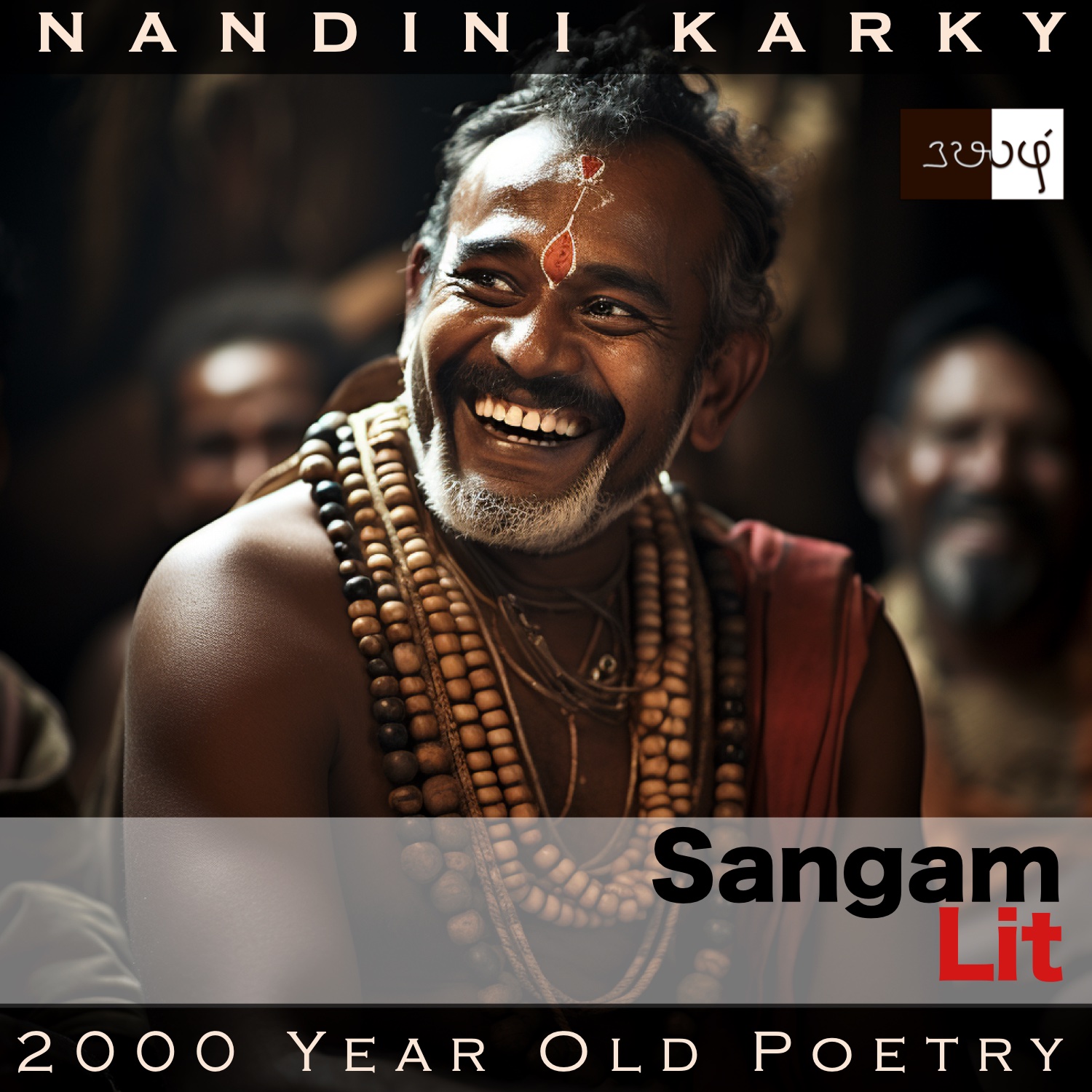Podcast: Play in new window | Download
Subscribe: Apple Podcasts | Spotify | Amazon Music | Android | iHeartRadio | TuneIn | RSS | More
In this episode, we hear of the joy and wealth that abounds in a land, as portrayed in Sangam Literary work, Puranaanooru 212, penned about the Chozha King Koperunchozhan by the poet Pisiraanthaiyaar. The verse is situated in the category of ‘Paadaan Thinai’ and sketches the satisfaction in the hearts of people vividly.

‘நும் கோ யார்?’ என வினவின், எம் கோக்
களமர்க்கு அரித்த விளையல் வெங் கள்
யாமைப் புழுக்கின் காமம் வீட ஆரா,
ஆரல் கொழுஞ் சூடு அம் கவுள் அடாஅ,
வைகு தொழில் மடியும் மடியா விழவின்
யாணர் நல் நாட்டுள்ளும், பாணர்
பைதல் சுற்றத்துப் பசிப் பகை ஆகி,
கோழியோனே, கோப்பெருஞ்சோழன்
பொத்து இல் நண்பின் பொத்தியொடு கெழீஇ,
வாய் ஆர் பெரு நகை வைகலும் நக்கே.
After many songs of discontent that we saw, it’s now time to celebrate a patron. The names of this poet and this king have become synonymous with friendship in Tamil literature. Although the poet came from a town in the Pandya kingdom, he had the greatest respect and love for this Chozha king. The poet’s words can be translated as follows:
“If you ask me, ‘Who is your king?’, I have to say that my king rules over a land, which renders mature, well-filtered and delicious toddy to field workers, along with the flesh of tortoise in copious quantities so that they savour this until their desire is satiated. Then, those workers hold fleshy pieces of eels in the hollow of their cheeks and even forget the jobs they have to attend to. Such is this king’s fertile land, where festivities never cease! Becoming the slayer of hunger in the kin of bards, he rules from the city of ‘Kozhi’. He is King Koperunchozhan, the one who has won the flawless friendship of ‘Poththi’ and shares the hearty joy of laughter every day.”
Let’s take a closer look at the verse. It appears as if the poet has been questioned many a time about whom he considered as his lord and leader. The poet answers that question by bringing before our eyes a land filled with lush fields, where workers are shown not slogging but relishing toddy of the highest quality along with tortoise meat. That food and drink is so abundant that they eat until their desire to savour that food is satisfied. As if that alone was not enough, they also have plentiful eels to cook and eat, so much that they hold it in the hollow of their cheeks and forget even to work. They may forget to work but that rich land forgets not its ceaseless festivities, the poet adds. The poet doesn’t simply tell us it’s a rich and fertile land. He shows how the people want for nothing and that their days are not all about work, but they have plenty of time for relishing the fine things that life has to offer.
Remembering that he’s still answering the question about who his king is, the poet says my king is the ruler of this fertile land, who makes such peace possible for his people, and this is not only for those who work the soil and earn their living but also to those who work with words. The king is indeed the enemy of hunger in bards, who come seeking to him, and their kith and kin, the poet clarifies. He declares that this king rules from the town of Kozhi, and goes by the name ‘Koperunchozhan’. From the public sphere of the king’s personality, the poet zooms closer and reveals how the king is a great friend of the Poet Poththiyaar, and how their laughter rings aloud to the joy of everyone every day. It’s interesting to see the poet delighting in the friendship of the king with one of his peers. He feels no envy but celebrates the king’s friendly nature so. And thus, the poet etches with a few words, the cheerful personality of this Sangam era king and the bountiful wealth of his nation!




Share your thoughts...